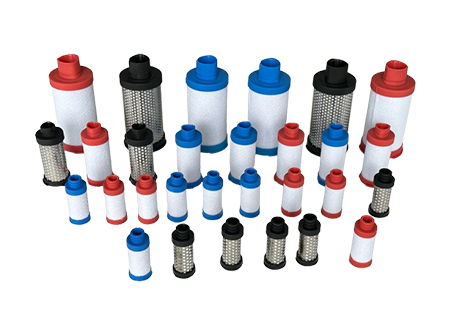The filtering principle of Brownian motion
The 'cleaning magic' of filter cartridges: Brownian motion and impurity separation
1. Core structure of filter element
The core of the filter element is a dense layer of glass fiber mesh, with fibers as thin as hair strands (diameter about 1-10 microns), stacked in a staggered manner to form a "maze"& nbsp;& nbsp;
Multi layer design: typically composed of a coarse filter layer (intercepting large particles) and a fine filter layer (targeting small particles)& nbsp;& nbsp;
Ultra large surface area: The tiny gaps between fibers form dense interception points, specifically designed to "capture" impurities.
2. Three tips for impurity separation
The filter element captures particles in three ways, and Brownian motion is a key assistance:& nbsp;& nbsp;
① Direct interception (large particles)
-Particle diameter>; When there is a gap between fibers, they are directly "stuck" by the fiber mesh, like passing through a sieve& nbsp;& nbsp;
-Typical targets: Visible particles such as dust and pollen& nbsp;& nbsp;
② Brown diffusion (small particles)
Tiny particles (<1 micron) undergo irregular Brownian motion and their trajectories are "chaotic" when impacted by gas molecules& nbsp;& nbsp;
Effect: Particles deviating from the airflow direction are more likely to collide with the fiber surface and be adsorbed& nbsp;& nbsp;
Typical targets: viruses, smoke, PM0.3 and other ultrafine particles& nbsp;& nbsp;
③ Inertial collision (medium particles)
When the airflow makes a sharp turn, heavier particles cannot stop the car due to inertia and directly collide with the fibers& nbsp;& nbsp;
How does Brownian motion improve efficiency?
Add Buff to particles: Brownian motion allows tiny particles to be actively delivered to the door instead of passively waiting for interception& nbsp;& nbsp;
Low speed is more efficient: the slower the airflow speed, the longer the particles stay in the filter, the more complete the Brownian motion, and the higher the probability of collision& nbsp;& nbsp;
The smaller the particle, the more difficult it is to escape: the smaller the particle, the more intense the Brownian motion, and the easier it is to be captured& nbsp;& nbsp;
4. The birth of clean air
Impurities are "locked" in the fiber network: once particles come into contact with fibers, they will be adsorbed by van der Waals forces or static electricity, making it difficult to escape& nbsp;& nbsp;
Air passes through lightly: Clean air passes smoothly through the fiber gaps, completing purification& nbsp;& nbsp;
5. Advantages of high-efficiency filter cartridges
Pure physical filtration: does not rely on chemical substances, safe and pollution-free& nbsp;& nbsp;
All sizes of particles can be intercepted, ranging from PM10 to virus grade particles& nbsp;& nbsp;
Energy saving and durable: low resistance, suitable for long-term operation of compressed air systems& nbsp;& nbsp;
Summary: The filter element is like an "intelligent trap net", which uses Brownian motion to trap small particles on its own. Combined with interception and inertial collision, impurities of all sizes are swept away, and only clean air is released& nbsp;& nbsp;




 Join us
Join us After-sale service
After-sale service News
News





